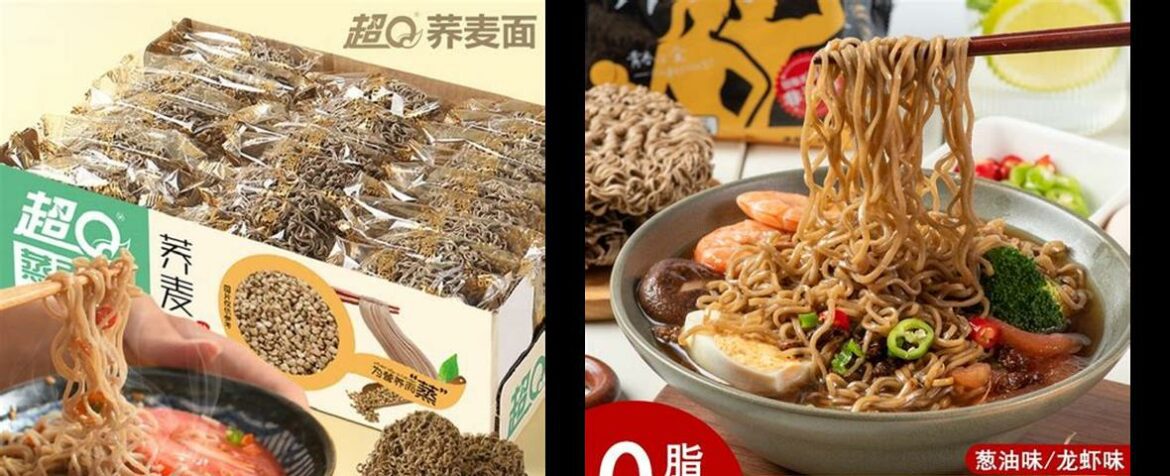Soba Noodle Replacement – Looking to switch up your noodle game? Say goodbye to the same old soba noodles and get ready for a culinary adventure with delicious substitutes! Whether you’re a noodle aficionado or just looking to try something new, this blog post has got you covered. From cooking vermicelli noodles like a pro to discovering the perfect soba noodle replacement, we’ve got all the tips and tricks you need. So grab your chopsticks and get ready for a journey that will tantalize your taste buds and leave you craving more. Let’s dive in and explore the wonderful world of soba noodle substitutes!
Soba Noodles: A Culinary Adventure with Delicious Substitutes
Soba noodles, hailing from the culinary traditions of Japan, have captivated taste buds with their distinct flavor and versatility. Crafted from buckwheat flour, these thin, light brown noodles boast a nutty essence that complements a wide array of dishes, ranging from savory soups to vibrant stir-fries and refreshing salads. However, circumstances may arise when soba noodles are not readily available, prompting the need for suitable substitutes that can replicate their unique culinary experience. This comprehensive guide unveils a delectable selection of soba noodle replacements, each possessing its own distinct characteristics and culinary applications.
Udon Noodles: A Chewy and Versatile Alternative
Udon noodles, originating from the wheat fields of Japan, emerge as a prime contender for soba noodle substitution. Their thick, chewy texture and mildly bland flavor profile make them a versatile addition to various culinary creations. Whether gracing a steaming bowl of soup, stir-fried with an array of colorful vegetables, or chilled in a refreshing salad, udon noodles seamlessly adapt to diverse culinary landscapes, offering a satisfying and authentic Japanese dining experience.
Ramen Noodles: A Popular Choice with a Neutral Taste
Ramen noodles, another Japanese noodle sensation, have gained immense popularity worldwide. Made from wheat flour, these noodles exhibit a chewy texture and a neutral flavor, making them a versatile culinary canvas for a myriad of dishes. From the classic ramen soup, a symphony of flavors and textures, to stir-fries bursting with vibrant colors and aromas, ramen noodles effortlessly elevate any culinary creation.
Rice Noodles: A Light and Flavorful Option
Rice noodles, hailing from the fertile rice paddies of Southeast Asia, offer a lighter alternative to soba noodles. Their delicate texture and subtle flavor make them a perfect complement to stir-fries, soups, and salads. Rice noodles readily absorb the flavors of accompanying ingredients, making them ideal for dishes where a harmonious blend of tastes is desired.
Cellophane Noodles: A Refreshing and Translucent Delight
Cellophane noodles, also known as glass noodles or mung bean noodles, originate from the culinary traditions of China. Their translucent appearance and slightly chewy texture add a unique dimension to various dishes. Often used in stir-fries, soups, and salads, cellophane noodles absorb flavors exceptionally well, making them a versatile ingredient for creating flavorful and visually appealing culinary delights.
Vermicelli Noodles: A Thin and Delicate Substitute
Vermicelli noodles, hailing from the rice fields of Vietnam, present a suitable замена for soba noodles, particularly for those seeking a lighter option. These thin, narrower noodles possess a subtle flavor and a smooth texture, making them a versatile culinary companion. Whether stir-fried with an array of colorful vegetables, simmered in a fragrant soup, or tossed in a refreshing salad, vermicelli noodles gracefully complement a variety of flavors.
Cooking Vermicelli Noodles: A Step-by-Step Guide
To prepare vermicelli noodles for your culinary creations, follow these simple steps:
1. Boil Water: Bring a large pot of water to a rolling boil.
2. Add Noodles: Carefully place the vermicelli noodles into the boiling water.
3. Cook Noodles: Allow the noodles to cook for 2-3 minutes or until they reach your desired tenderness.
4. Drain and Rinse: Drain the noodles in a colander and immediately rinse them with cold water to stop the cooking process.
5. Enjoy Your Noodles: Drain the noodles thoroughly and use them in your favorite stir-fries, soups, or salads.
Conclusion: A Culinary Journey with Soba Noodle Substitutes
The culinary landscape is vast and ever-evolving, offering a myriad of alternatives to cater to diverse tastes and preferences. When soba noodles are not readily available, the substitutes discussed in this comprehensive guide provide a culinary adventure that is both satisfying and delectable. From the chewy texture of udon noodles to the delicate flavors of rice noodles, and the refreshing translucency of cellophane noodles, each substitute offers a unique experience that enhances the culinary journey. Embrace these alternatives and embark on a voyage of taste and creativity, exploring the boundless possibilities of culinary substitution.
FAQ about Soba Noodle Replacement
Q: What is this comprehensive guide about?
A: This comprehensive guide explores various alternatives to soba noodles that can replicate their unique culinary experience.
Q: Why would I need a soba noodle replacement?
A: Soba noodles may not always be readily available, so having substitutes can provide a satisfying and delectable culinary adventure.
Q: What are some examples of soba noodle replacements?
A: Some examples of soba noodle replacements discussed in the guide include udon noodles, rice noodles, and cellophane noodles.
Q: What makes udon noodles a good substitute for soba noodles?
A: Udon noodles have a thick, chewy texture and a mildly bland flavor profile, making them versatile and suitable for various culinary creations.
Q: How can I cook vermicelli noodles?
A: To prepare vermicelli noodles, follow a step-by-step guide that provides instructions on how to cook them for your culinary creations.
Q: What are the culinary applications of udon noodles?
A: Udon noodles can be used in a steaming bowl of soup, stir-fried with vegetables, or chilled in a refreshing salad, offering a satisfying and authentic Japanese dining experience.


